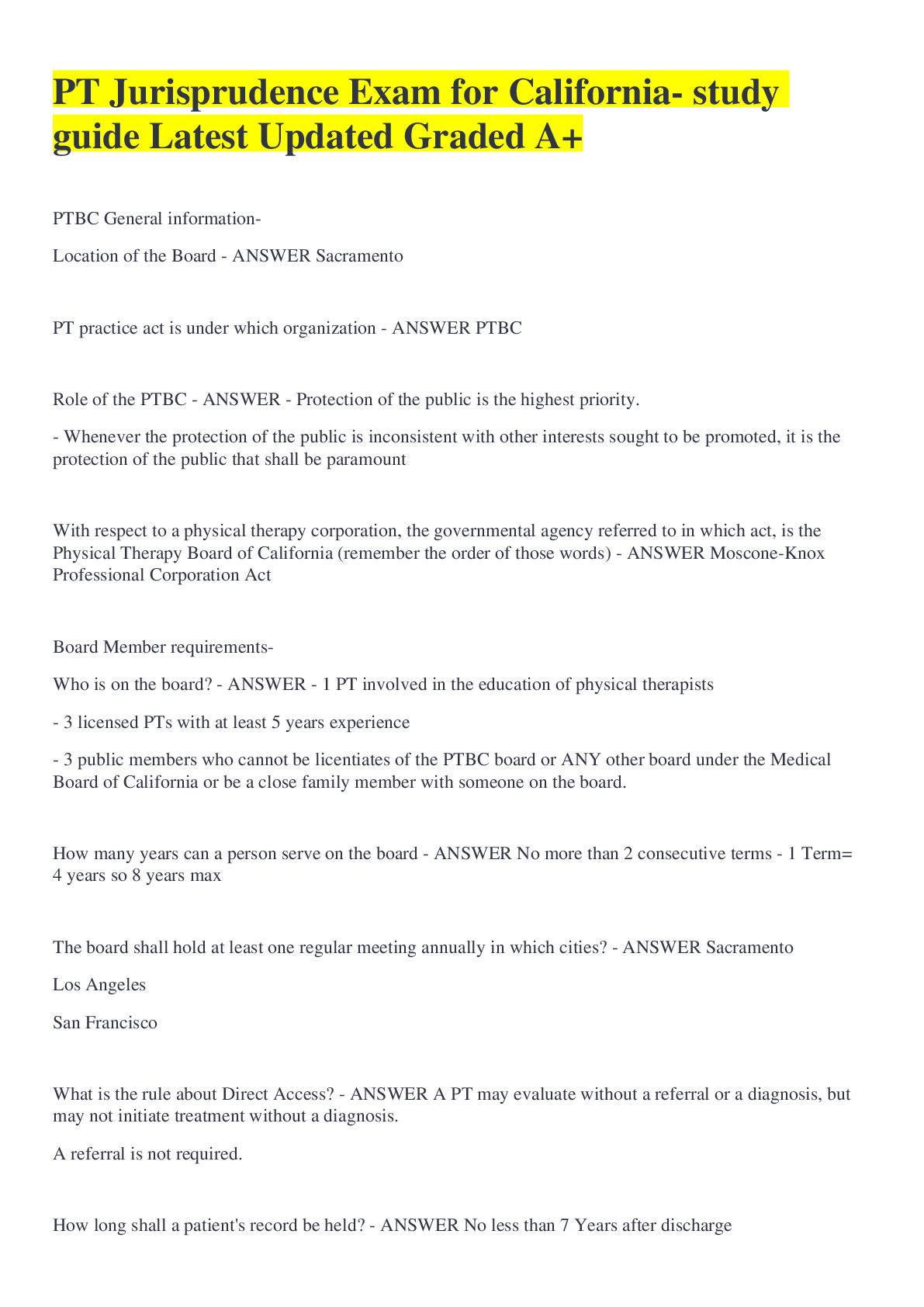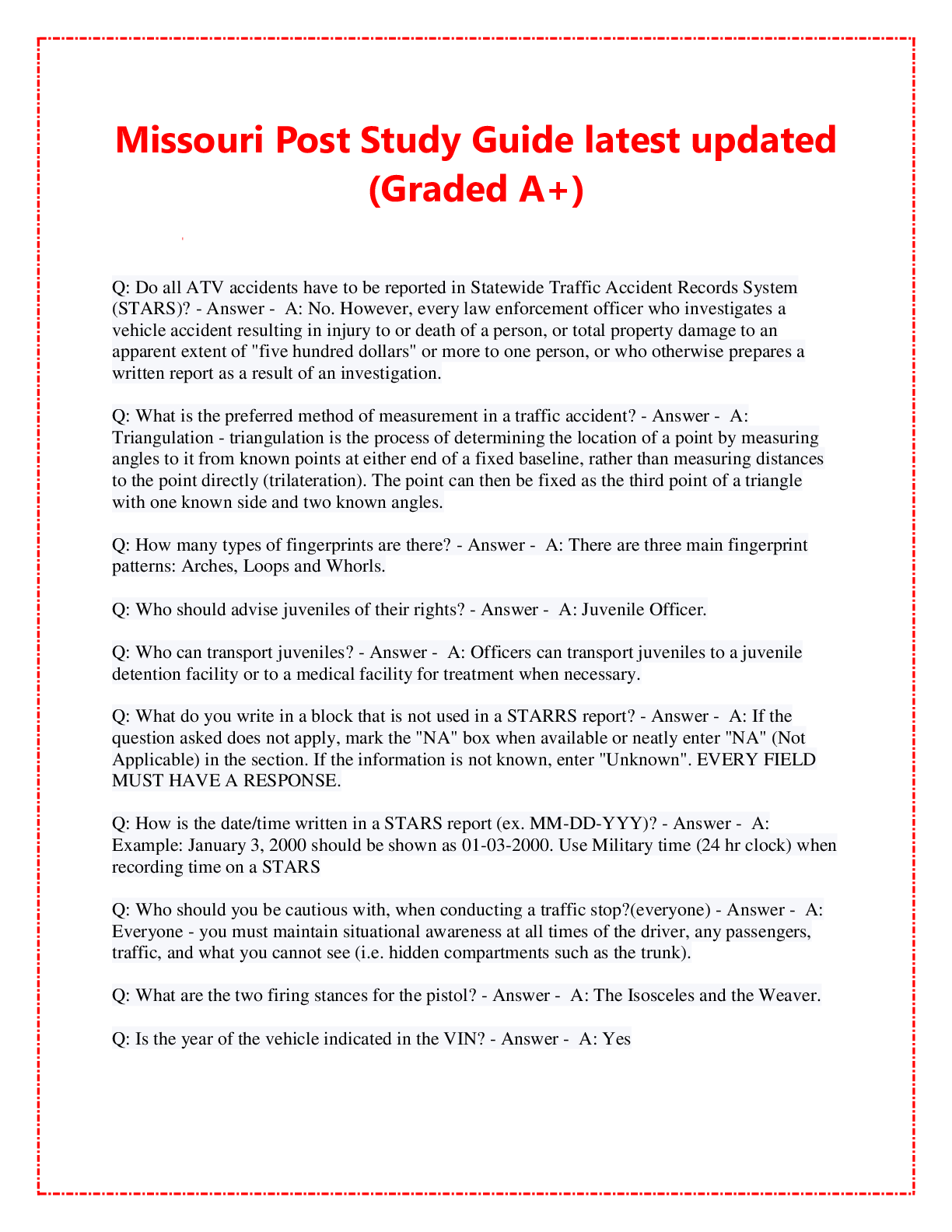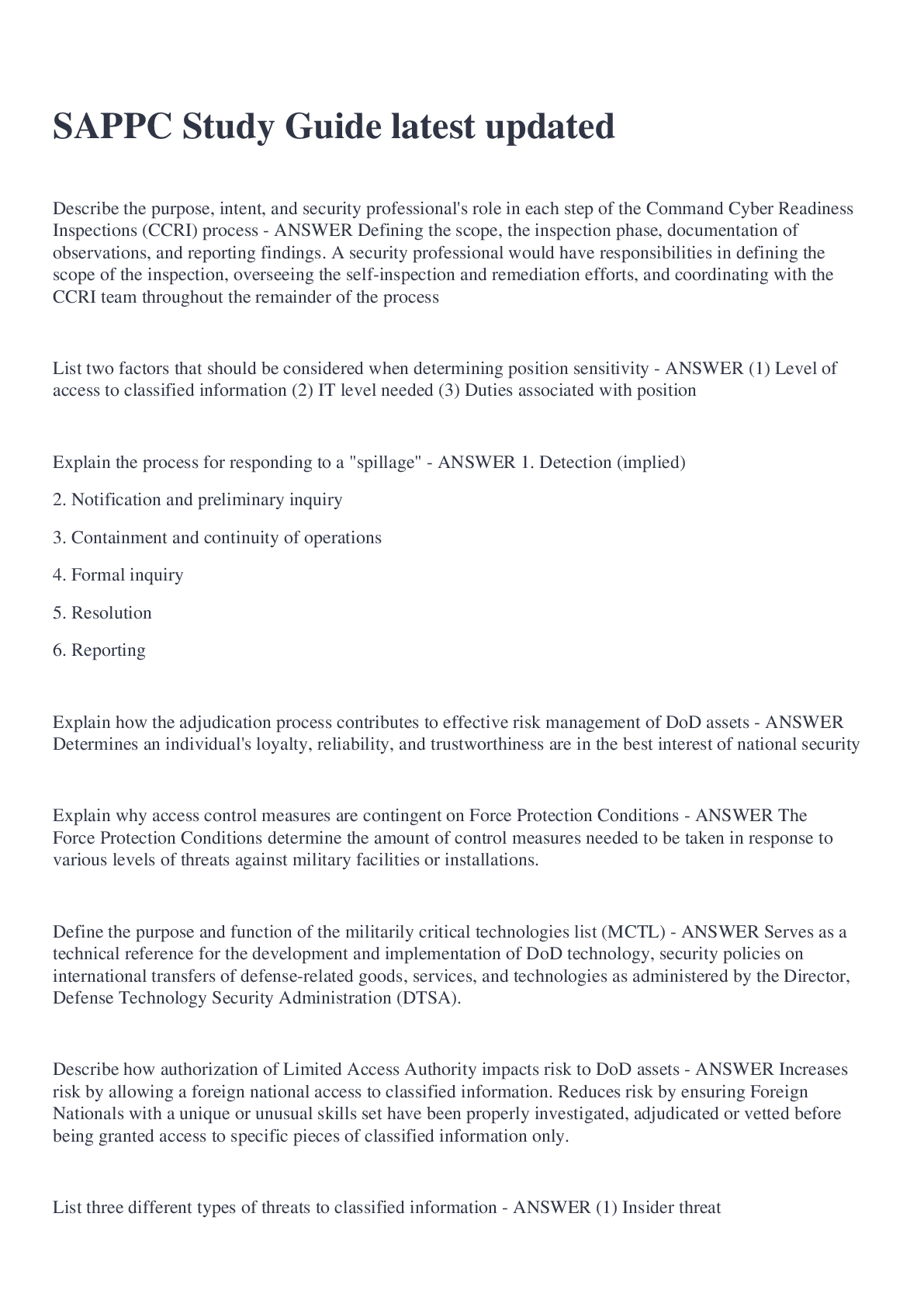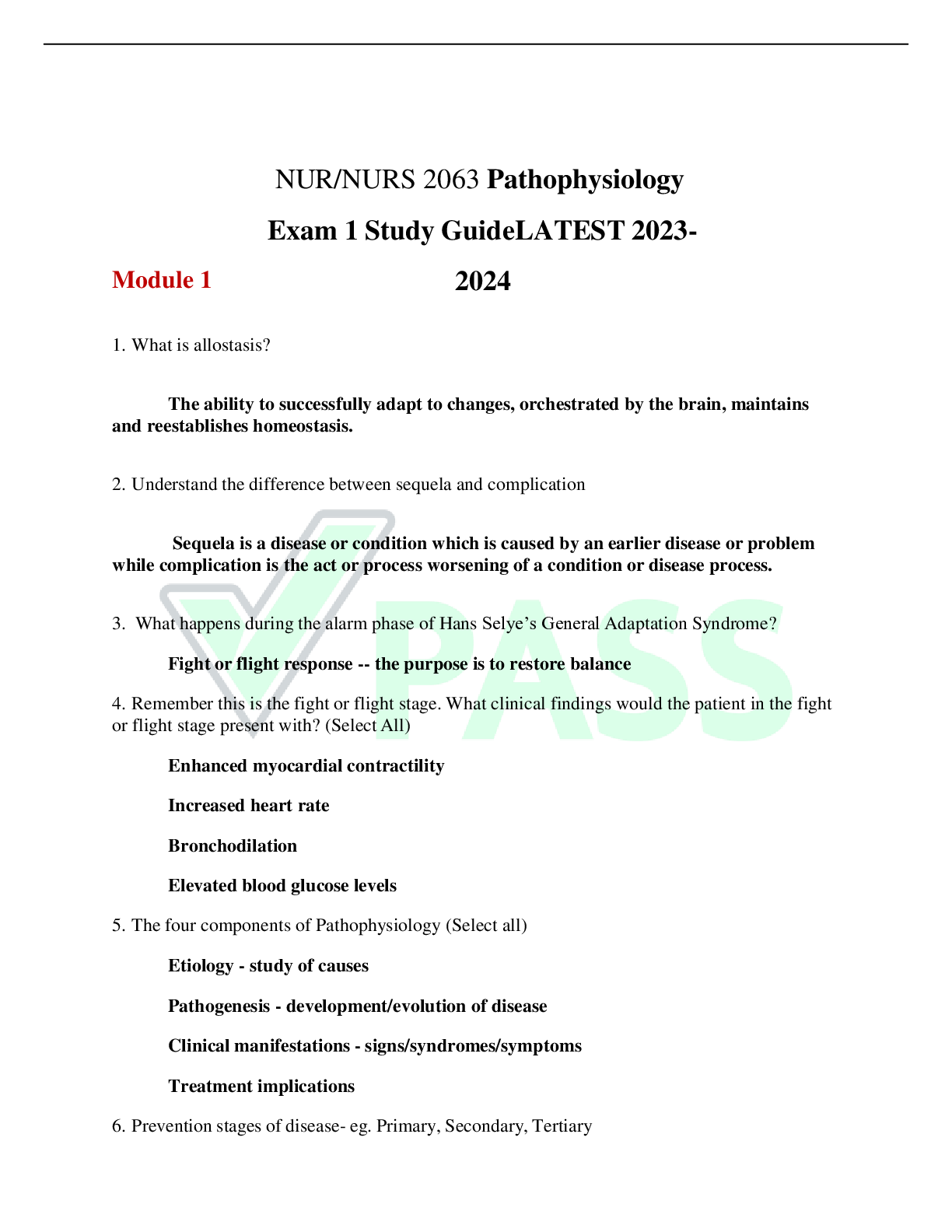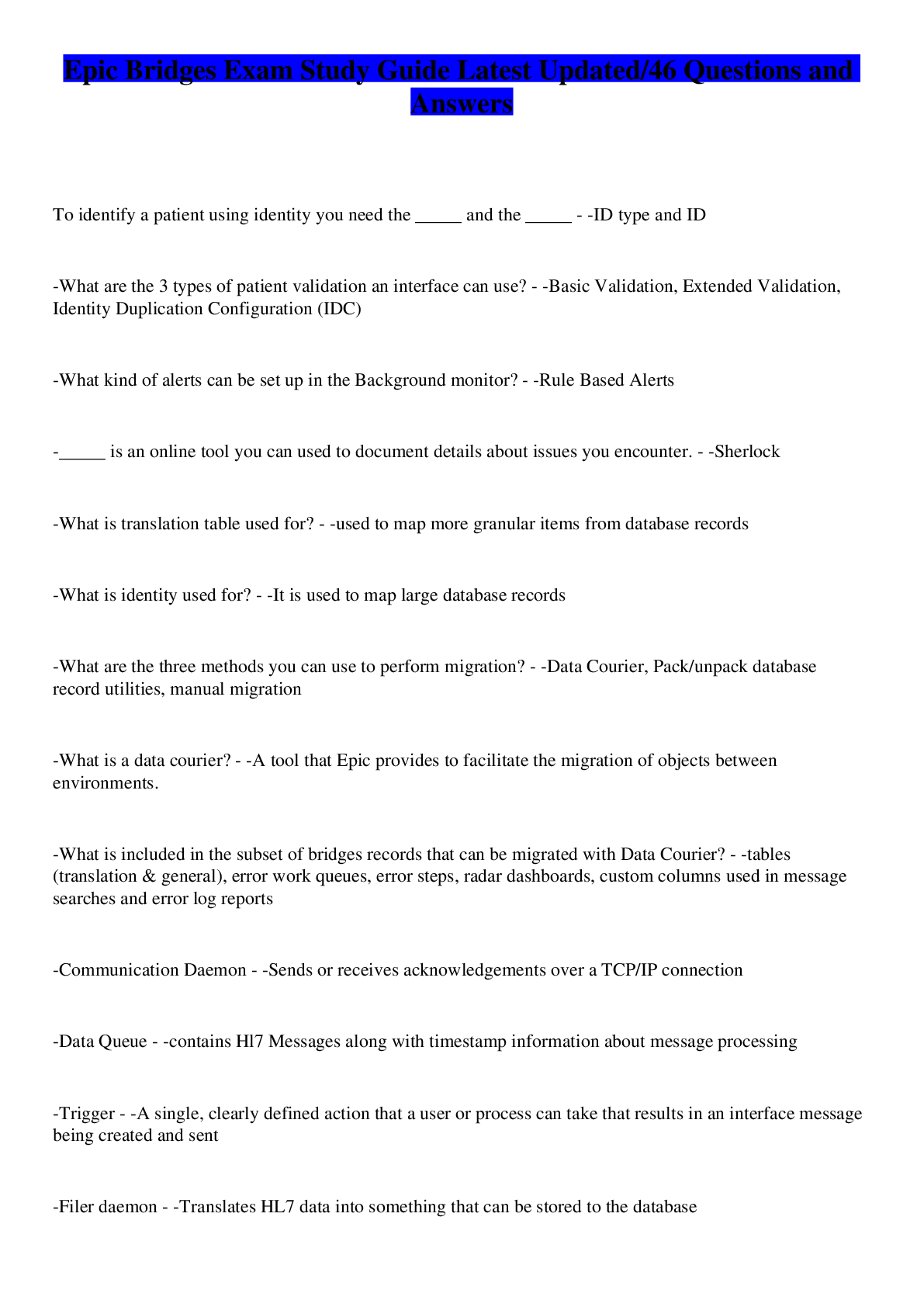Information Technology > EXAM > WGU Web Development Applications - C777 Exam Study Guide Latest Updated (All)
WGU Web Development Applications - C777 Exam Study Guide Latest Updated
Document Content and Description Below
Relatively small applications developed exclusively for mobile devices - ANSWER App structure element in HTML5 that includes hypertext menus to access various pages of the web site - ANSWER <nav> ... Create Apps for Mobile Devices - ANSWER HTML5 API's HTML, CSS, and JavaScript - ANSWER Web development Trifecta You can create Web pages that easily adapt to smartphones, tablets, gaming devices, and smart TVs, as well as to traditional computers - ANSWER Benefit of developing Web pages using the Web Development Trifecta required the separation of presentation and content. Deprecation tags we disallowed and generated validation errors. - ANSWER HTML 4.01 Strict allowed developers to insert formatting using either CSS or traditional layout instructions - ANSWER HTML 4.01 Transitional Required for pages that used HTML frames, which placed Web pages inside each other to create separate panes in the browser window. - ANSWER HTML 4.01 Frameset <audio> element must have this attribute and value to incorporate default audio operations. - ANSWER controls="controls" Prevents the first frame of the video from displaying while the video is downloading - ANSWER Poster Attribute Popular web browser that supports MP3, Ogg, and WAV audio formats, as well as many others. - ANSWER Chrome HTML5 APIs use fewer resources than a proprietary browser plug-in does, such as battery power and CPU memory. - ANSWER Advantage of using HTML5 APIs when designing Web Pages for mobile devices Your web pages respond to user screen size and work in multiple environments - ANSWER Responsive Design Structure element in HTML5 to include content that is directly related to the subject of the document - ANSWER <main> Defines the top of the Web page, similar to the header in the word-processing document. - ANSWER <header> defines portions or areas of a document as necessary, such as a group of articles or images - ANSWER <section> Defines site content, such as company services, news articles, blogs, images, videos, tweets, and social networking posts. - ANSWER <article> Defines content that is aside from or additional to the main article content, such as advertisements or news feeds - ANSWER <aside> Defines the bottom of the Web Page, similar to the footer in a word-processing document - ANSWER <footer> When you validate you markup, the code will match the DTD (standard syntax rules) that you specify. - ANSWER Adopting a single W3C standard and apply is consistently to your Web Page markup Enables you to place formatting instructions in an external text file to determine how HTML elements in a Web page will display - ANSWER Cascading Style Sheets Importance of understanding what goes on behind the GUI of a Web Editor - ANSWER You will be able to troubleshoot code issues when the GUI Web editor fails Checking your code to verify that is complies with the syntax rules of your chosen standard - ANSWER Code validation HTML5 API that provide a place on a Web page where you can display graphics, animations, videos, and games dynamically without the need for a plug-in. - ANSWER Canvas XHMTL incorporates the strict syntax rules of XML with the existing set of HTML 4.01 tags to create web documents - ANSWER XHTML vs. HTML audio attribute that allows your audio to play over and over again without stopping - ANSWER loop="loop" Specifies that the video will automatically play immediately upon loading - ANSWER autoplay="autoplay" W3C Markup Validation Service used to determine the HTML specification against which to validate your Web page markup code - ANSWER The specified DTD in the <!DOCTYPE> declaration on you HTML page Refers to any element to which designated styles are applied. - ANSWER Selector is a format instruction that consists of a specified selector and the properties and values applied to it. - ANSWER Rule Consists of a property and its value - ANSWER Declaration To define multiple declarations for one selector withing a rule, you must separate each declaration with a ______________. - ANSWER Semicolon Except when declaring inline styles, you must place properties and their values within _____________. - ANSWER Curly Braces By placing code in between the /* and */ characters you create a ___________ - ANSWER Comment The you define will flow, or cascade, throughout your documents, unless another style defined inside of a page specifically overrides it. This concept is known as ______________. - ANSWER Inheritence The normal, or default, position of the element within a page. - ANSWER Static The element is relative to others on a page, usually because of the top, bottom, left, and right properties. - ANSWER Relative The element appears to float above the document and can be positioned as needed it is completely removed from the rest of the page flow. - ANSWER Absolute The element remains in the same position when the page is scrolled. - ANSWER Fixed The element inherits its position from the parent element. - ANSWER Inherit In the CSS Box Model, the outer-most box that immediately encloses the border. - ANSWER Margin In the CSS Box Model. the innermost box - ANSWER Content Changes the way a selector renders in a browser - ANSWER Property In the CSS Box Model, the defined area that immediately encloses the content - ANSWER Padding Specifies the typeface to be used - ANSWER Font-Family In the CSS Box Model, the box that immediately encloses the padding - ANSWER Border Achieved by assigning specific pixel widths to elements. Should be use if you want to create Web pages whose text, image, and layout will not vary from browser to browser. - ANSWER Fixed-Width Layout Also known as cascading, the way that styles flow throughout a document or site. A CSS style sheet rule to override styles specified in a linked external style sheet. - ANSWER Inheritance Also known as relative width or fluid layout. Achieved by assigning percentage values to elements. - ANSWER Liquid Layout Defines the file type, such as text or video, and the extension, such as css or mp4, for a user agent or browser. - ANSWER Multipurpose Internet Mail Extensions (MIME) The preferred method of designing Web pages for mobile devices. It allows the size of each element to be flexible and will change dynamically depending on the size of the browser window. - ANSWER Implementing the Liquid Layout using CSS Useful for floating images to the left or right of text in HTML5 - ANSWER CSS Classes To ensure uniformity in style and formatting with a document and across multiple documents - ANSWER Purpose of using a style guide when designing your Web site Specifies the location of the linked document - ANSWER The HREF attribute Position property value CSS provide to position block-level elements - ANSWER Static, relative, absolute, fixed, and inherit Most non-HTML5-compliant browsers cannot interpret CSS3 - ANSWER Disadvantage of using CSS3 You must add JavaScript code to your HTML documents to create HTML5 structural elements, and add a new rule to CSS to define the HTML5 structural elements as block-level elements. - ANSWER Creating a company intranet using HTML5 and CSS elements when using Windows XP and IE8 Remy Sharp has created a script that has become the de facto standard for many Web developers around the world. The script enables Web developers to: - ANSWER Support HTML5 in older IE browsers CSS3 selector that selects every instance of a specified element that is the first of its parent. - ANSWER element:first-of-type CSS3 selector that selects every instance of a specified element that is the last of its parent - ANSWER element:last-of-type CSS3 selector that selects every disabled instance of a specified element - ANSWER element:disabled CSS3 selector that selects every enabled instance of a specified element - ANSWER element:enabled A prefix that ensures that the CSS3 code that is precedes will render properly in Chrome, Safari, and iOS browsers. - ANSWER -webkit- A prefix that ensures that the CSS3 code that precedes will render properly in Opera Browsers. - ANSWER -o- A prefix that ensures that the CSS3 code that precedes will render properly in FireFox browsers. - ANSWER -mozilla- A prefix that ensures that the CSS3 code that precedes will render properly in Internet Explorer browsers - ANSWER -ms- Determines whether the background extends into the border or not. - ANSWER background-clip A background-clip property that extends the background to the outside edge of the border (default setting) - ANSWER border-box A background-clip property that extends the background to the padding area but not into the border - ANSWER padding-box A background-clip property that clips the background within the content box - ANSWER content-box A selector that selects each occurence of element2 that is preceded by element1. The two elements must have the same parent. - ANSWER element1~element2 A border property to use if wanting to add a configurable shadow to a box - ANSWER box-shadow A box-shadow value that determines the horizontal shadow position, also referred as the x-offset - ANSWER h-shadow A box-shadow value that determines the vertical shadow position, also referred as the y-offset - ANSWER v-shadow A box-shadow value that determines the distance of the shadows blur. - ANSWER blur A box-shadow value that determines the shadows size - ANSWER spread A box-shadow value that determines the shadows color - ANSWER color A box-shadow value that creates an inward shadow instead of an outward shadow - ANSWER inset box-shadow 5px of h-shadow 5px of v-shadow 0px of blur 5px of spread #888888 color - ANSWER box-shadow: 5px 5px 0px 5px #888888 A CSS3 property that creates a border using an image instead of just a line. - ANSWER border-image A CSS3 property that creates rounded corners - ANSWER border-radius A background-size property value that sets the backgrounds width first then the height. Can only be in specified pixels, em units, etc. - ANSWER length A background-size property value that sets the backgrounds width first then the height. The value specified determines the size of the image in relation to the parent element. - ANSWER percentage A background-size property value that scales the background image to the largest size possible that completely covers the background area of the parent container while maintaining aspect ratio of the image. - ANSWER cover A background-size property value that scales the background image to the largest size possible that allows both width and height to fit within the specified content area. - ANSWER contain Properties required to use are the font-family and the src properties - ANSWER @font-face CSS3 text effect properties can be used to produce effects that previously required the use of images - ANSWER CSS3 new text effect properties Specifies whether (and how) punctuation characters can appear outside the line box at the beginning or end of a full line of text - ANSWER hanging-punctuation Specifies whether (or how) punctuation can be trimmed or sized when they appear at the beginning or end of a line - ANSWER punctuation-trim Specifies a justification style for the last line in a text block whose text-align property is set to "justify" - ANSWER text-align-trim Applies emphasis style and color to an element's text in a single declaration. - ANSWER text-emphasis Specifies a justification style for text whose text-align property is set to "justify" - ANSWER text-justify Creates outlined characters for text - ANSWER text-outline specifies whether text that overflows that containing element should be clipped or indicated with an ellipsis - ANSWER text-overflow Applies a shadow effect behind text characters - ANSWER text-shadow Specifies whether lines of text in a text area can break, and where a line can be broken - ANSWER text-wrap specifies when lines of text in a text area can break, and where a line can be broken - ANSWER word-break Specifies that long words in a text area may be broken without a hyphen and wrap to the next line - ANSWER word-wrap CSS3 selector selects every instance of a specified element whose specified attribute contains the specified substring value - ANSWER element[attribute*=value] CSS3 selector selects every instance of a specified element whose specified attribute ends with the specified value. - ANSWER element[attribute$=value] CSS3 selector selects every instance of a specified element whose specified attribute begins with the specified value - ANSWER element[attribute^=value] A property that defines the location to which the background-position property should be relative - ANSWER background-origin A property that determines whether the background extends into the border or not. - ANSWER background-clip A property that allows you to resize background images - ANSWER background-size 2D transform method that rotates the element clockwise at a specified degree. Negative values rotate the element counter-clockwise. - ANSWER rotate(angle) 2D transform method that increases or decreases the size of the element, based on specified parameters for width(x) and height(y) - ANSWER scale(x,y) 2d transform method that changes the element's width - ANSWER scaleX(n) 2D transform method that changes the element's height - ANSWER scaleY(n) Combines all of the 2D transform methods into one. Takes six parameters, containing mathematic functions, which enable the element to rotate, scale, move (translate), and skew - ANSWER matrix(n, n, n, n, n, n) 2D transform method that moves the element from its current position, based on the specified parameters for the left (x) and top (y) position. - ANSWER translate(x, y) 2D transform method that moved the element along the X-axis (horizontally) - ANSWER translateX(n) 2D transform method that moves an element along the Y-axis (vertically) - ANSWER translateY(n) 2D transform method that turns or skews the element to a specified angle, based on the specified parameters for the horizontal (x) and the vertical(y) lines. - ANSWER skew(x-angle, y-angle) 2D transform method that turns or skews the element to a specified angle along its X-axis. - ANSWER skewX(angle) 2D transform method that turns or skews the element to a specified angle along its Y-axis - ANSWER skewY(angle) 3D transform method that rotates the element around its X-axis at the specified degree - ANSWER rotateX(angle) 3D transform method that rotates the element around its Y-axis at the specified degree - ANSWER rotateY(angle) 3D transform method that rotates the element around its Z-axis at the specified degree - ANSWER rotateZ(angle) 3D transform method that defines a 3D rotation by specifying the degree for rotation for all axes - ANSWER rotate3d(x,y,z,angle) 3D transform method that defines a 3D scale transformation. Increases or decreases the size of the element, based on specified parameters for width(x), height(y), and depth(z). - ANSWER scale3d(x,y,z) 3D transform method that defines a 3D scale transformation by specifying a value for the X-axis - ANSWER scaleX(x) 3D transform method that [Show More]
Last updated: 1 year ago
Preview 1 out of 26 pages
Instant download
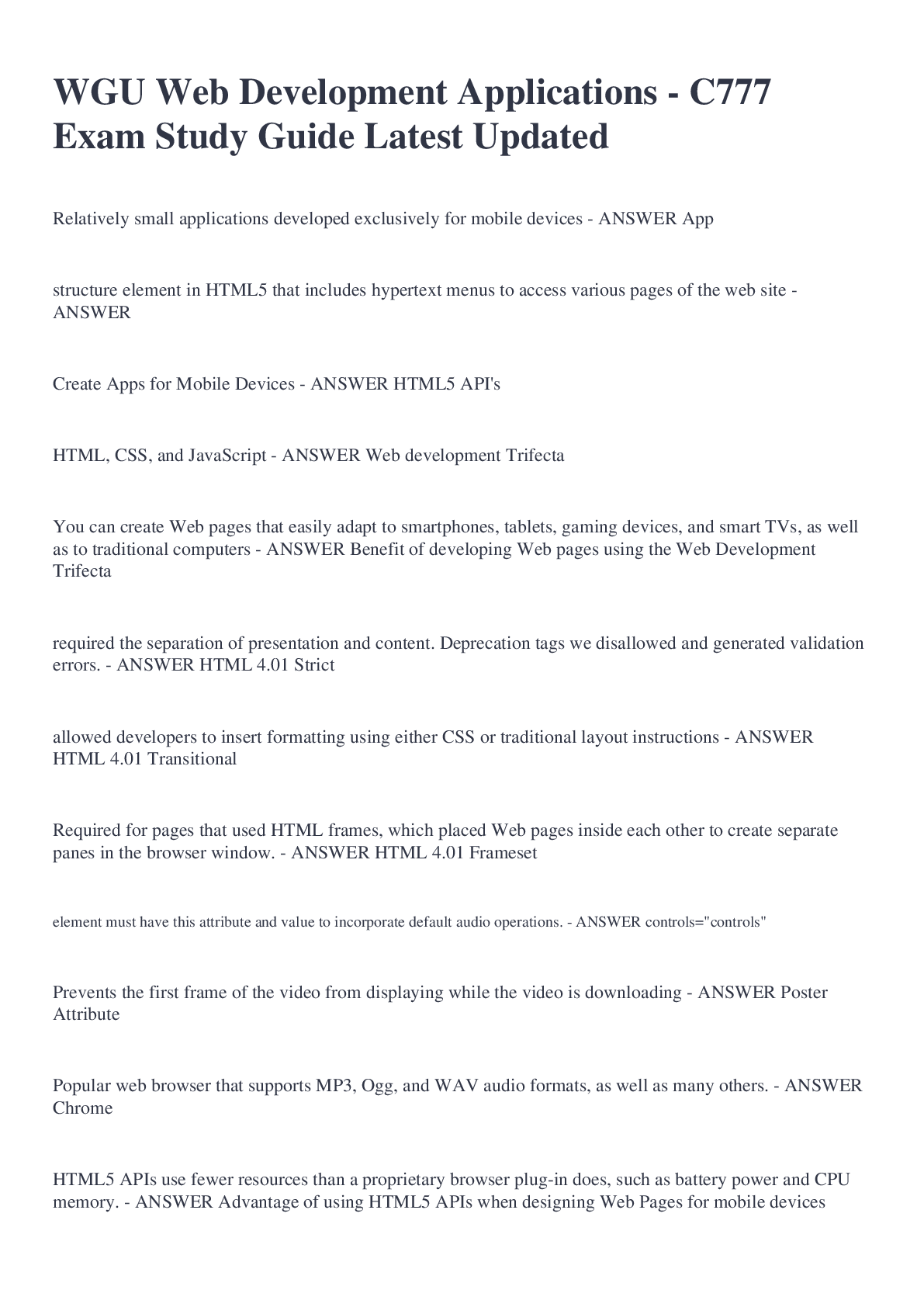
Instant download
Reviews( 0 )
Document information
Connected school, study & course
About the document
Uploaded On
Nov 07, 2022
Number of pages
26
Written in
Additional information
This document has been written for:
Uploaded
Nov 07, 2022
Downloads
0
Views
41



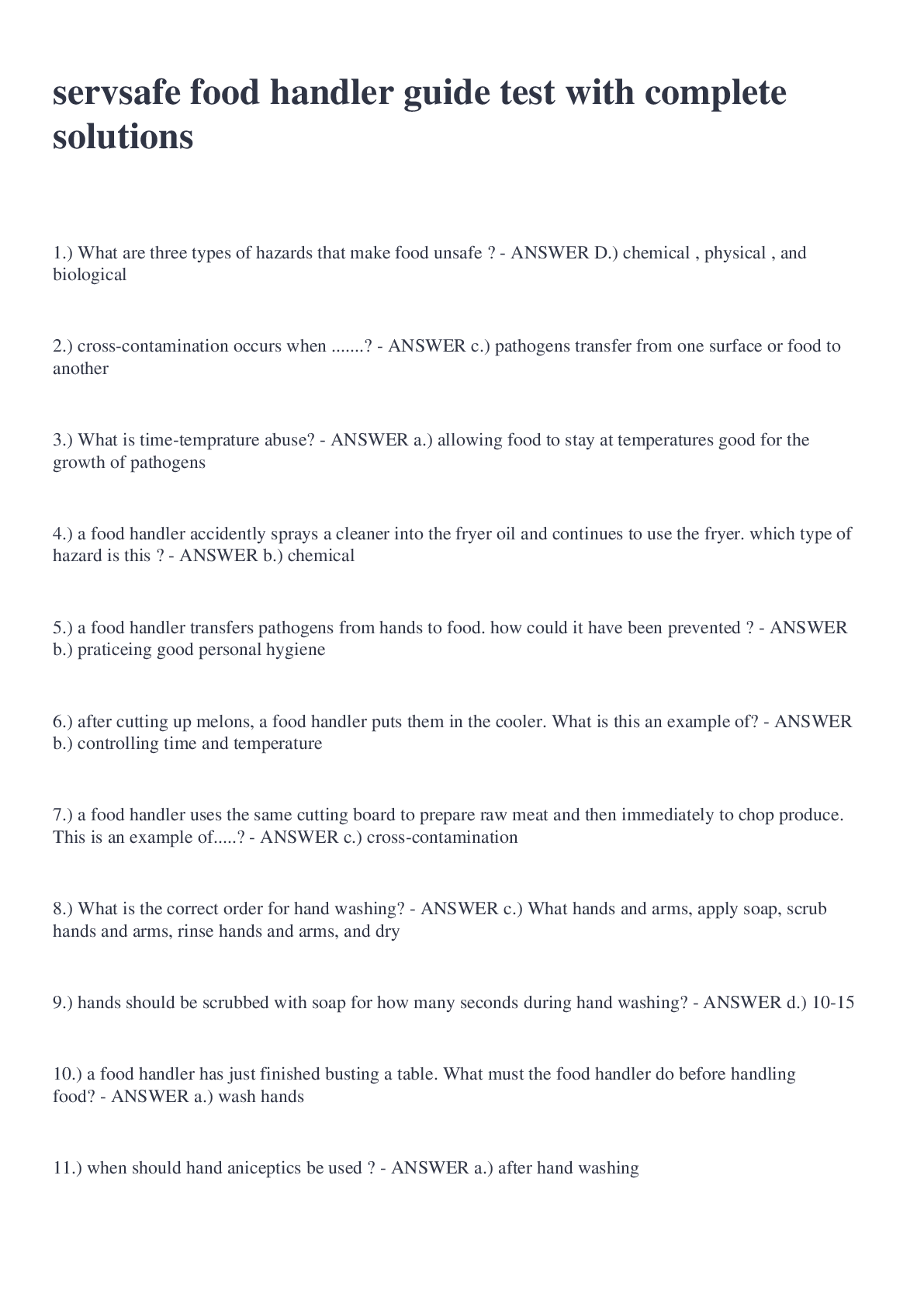


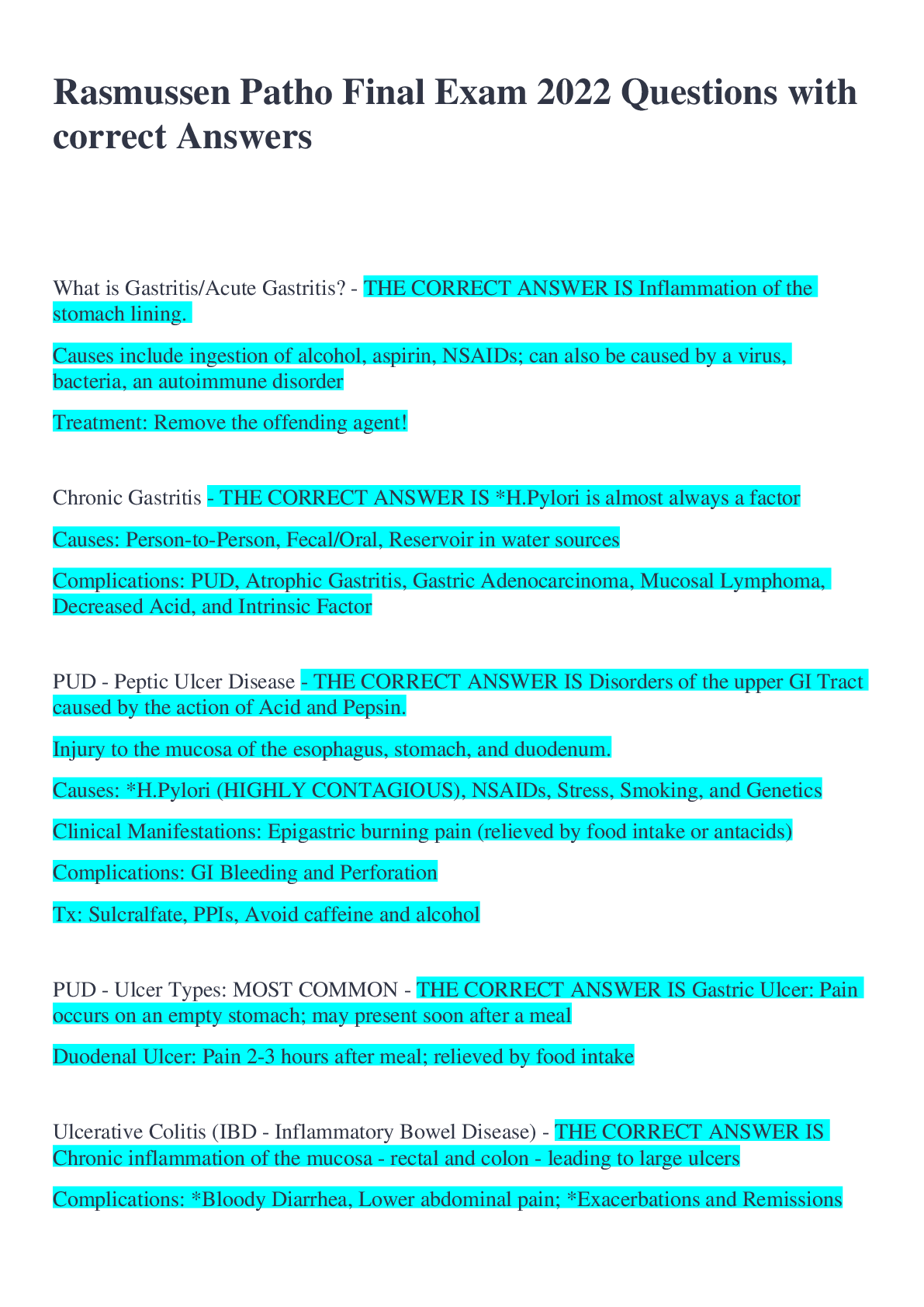

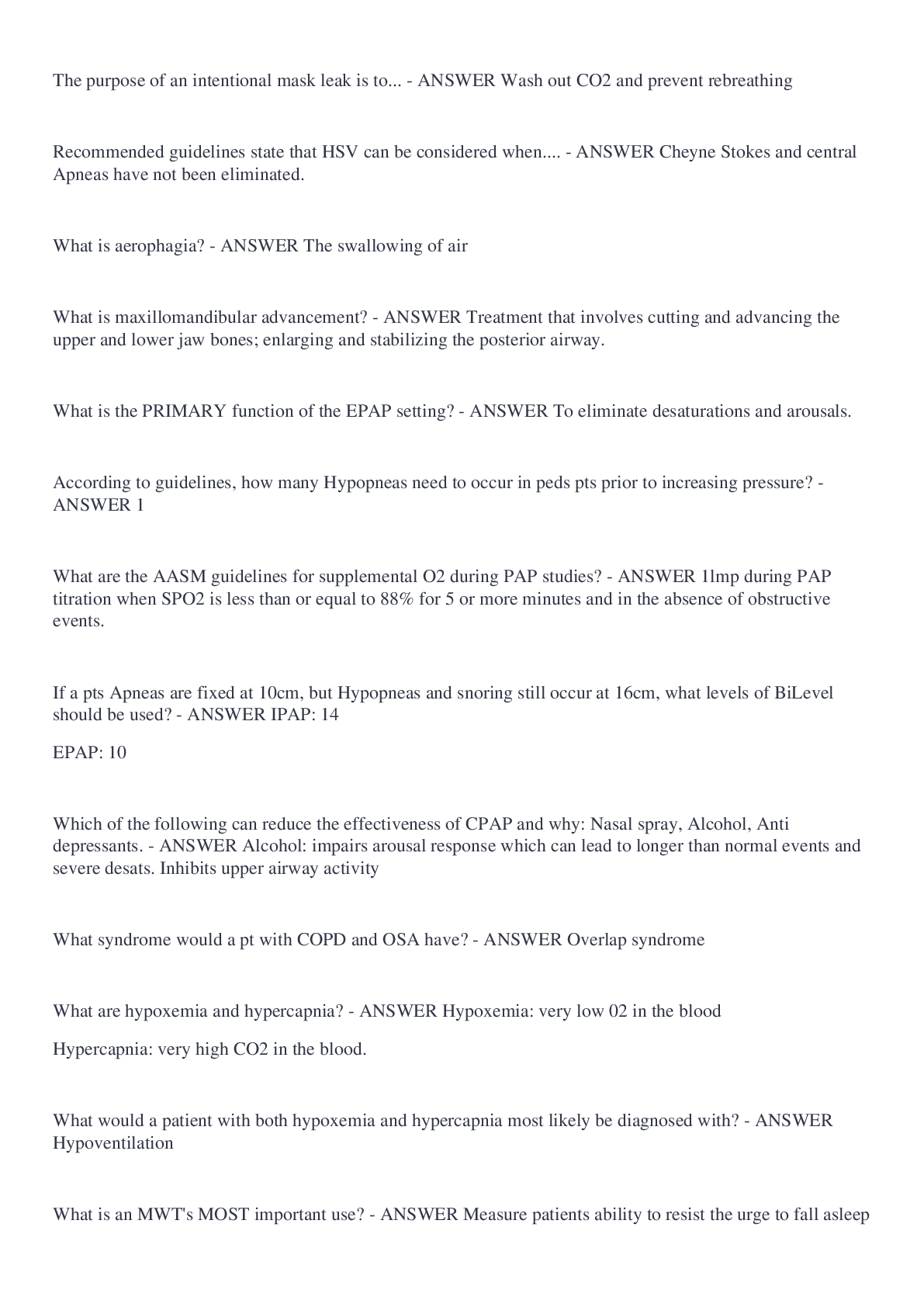



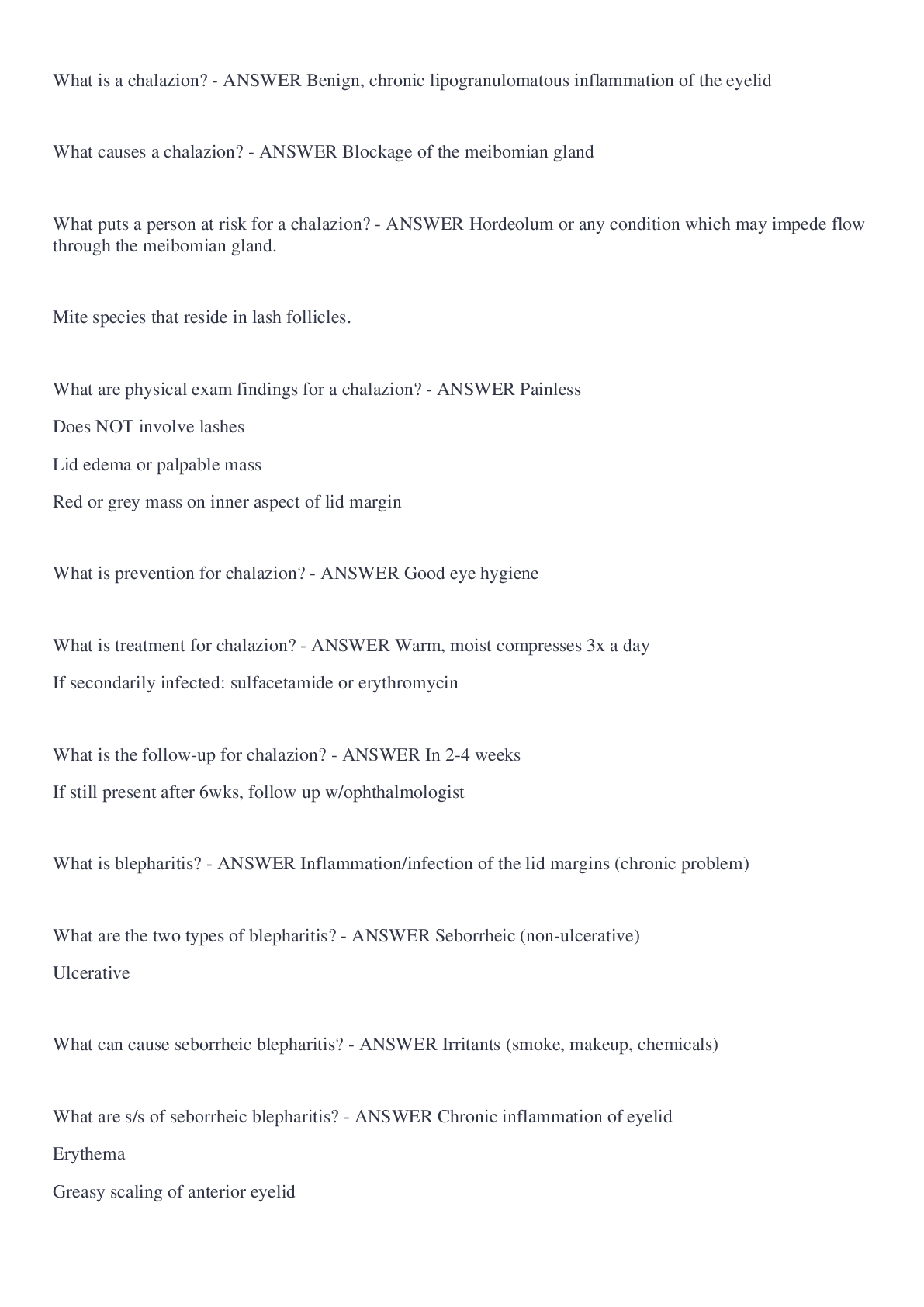


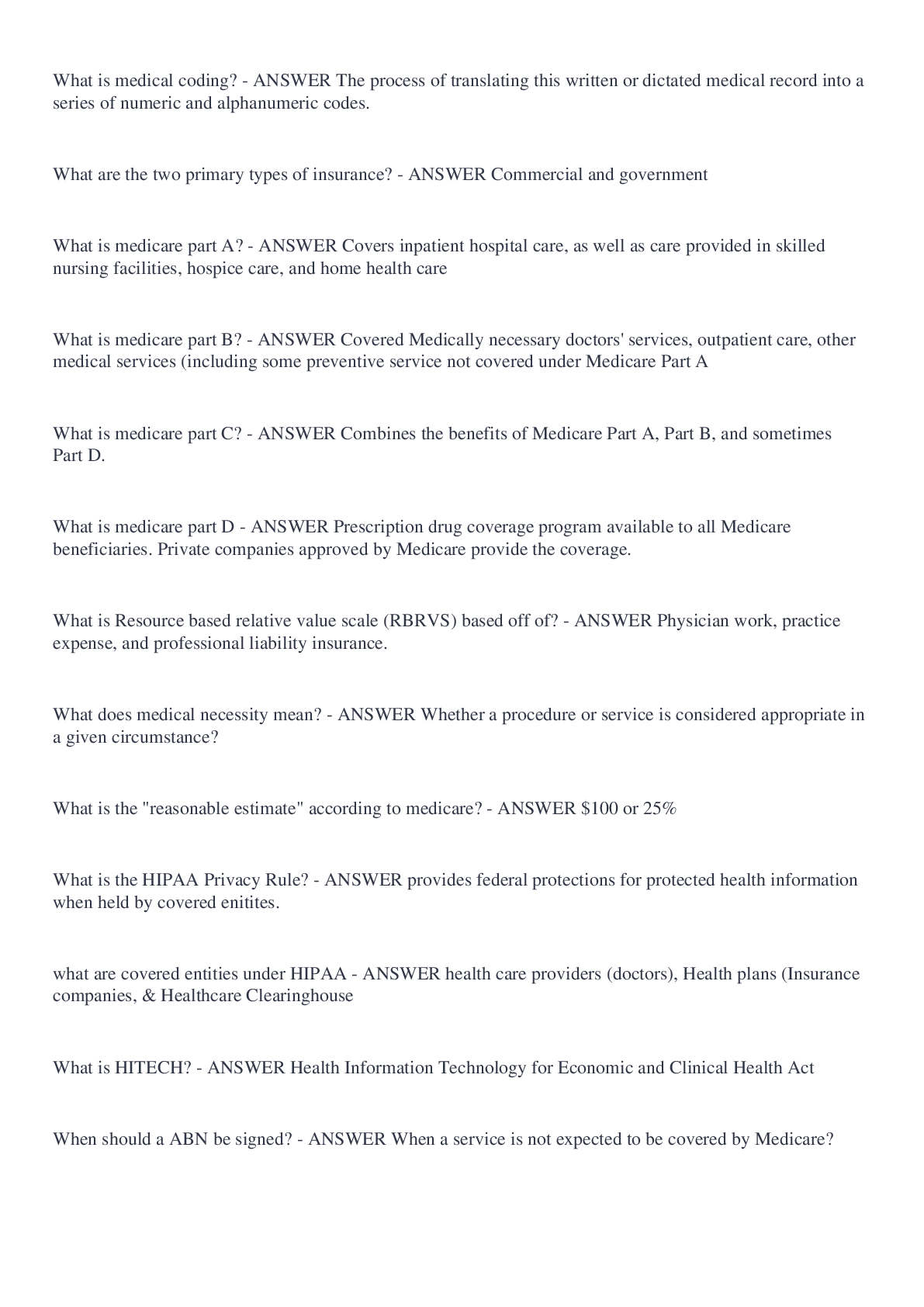
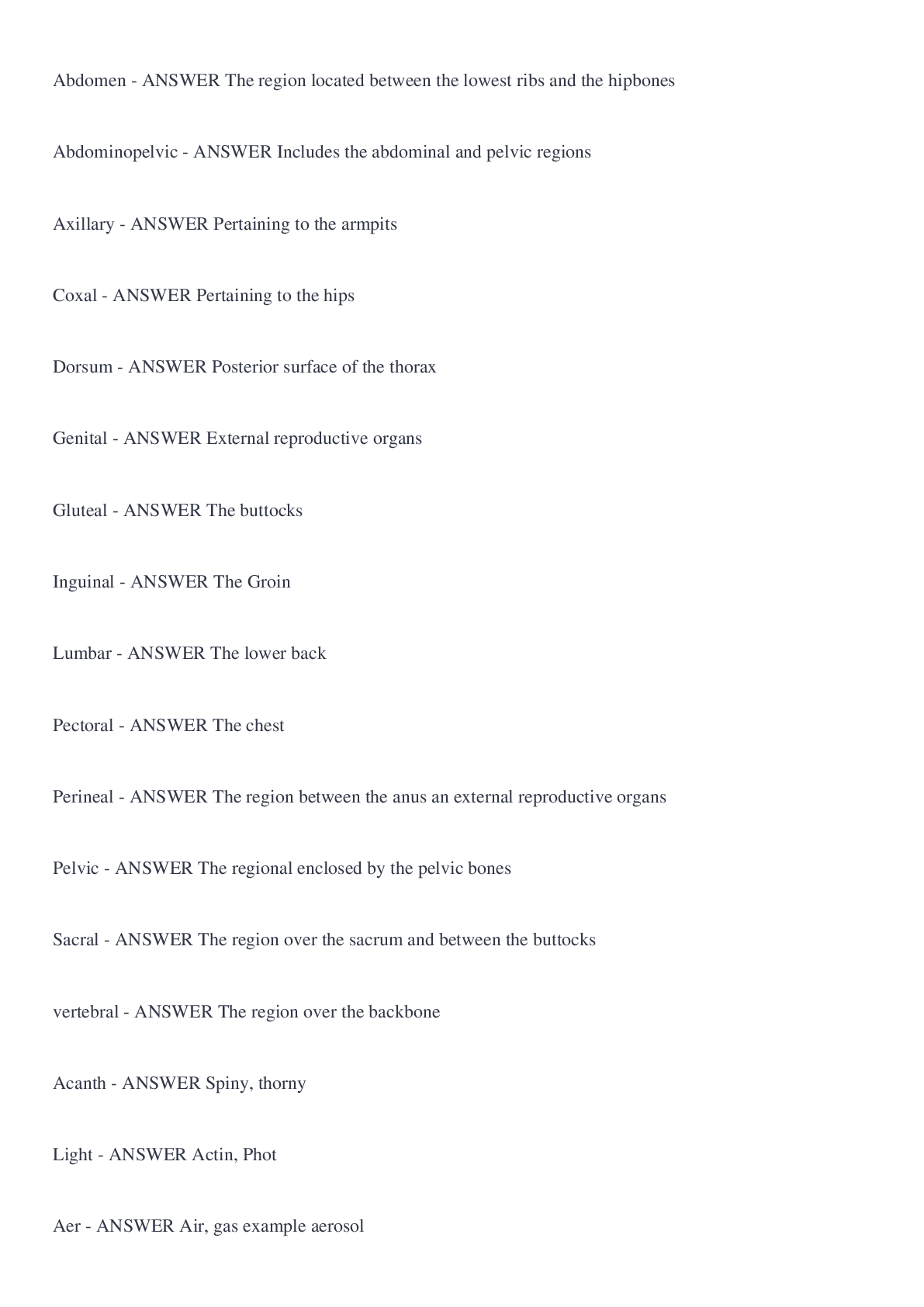
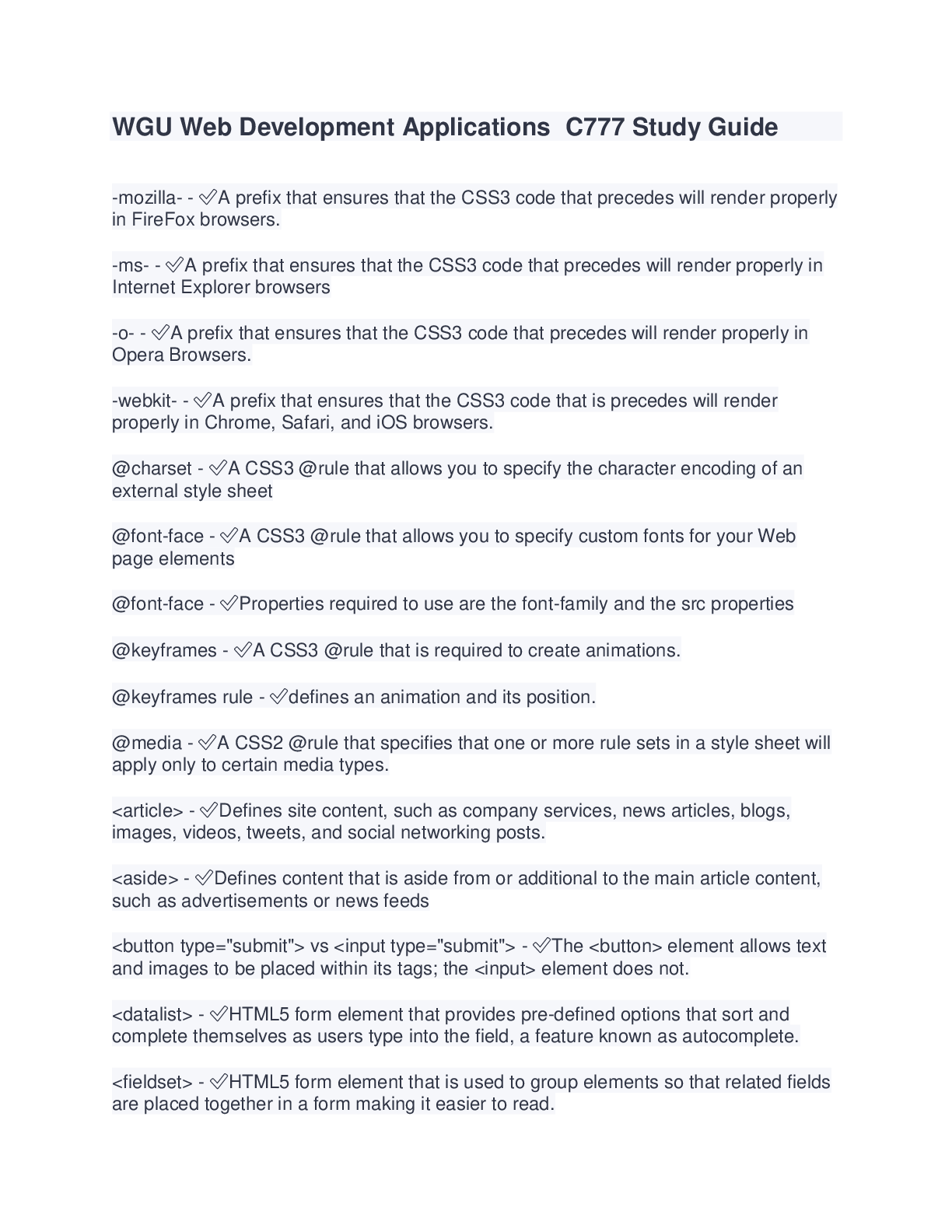
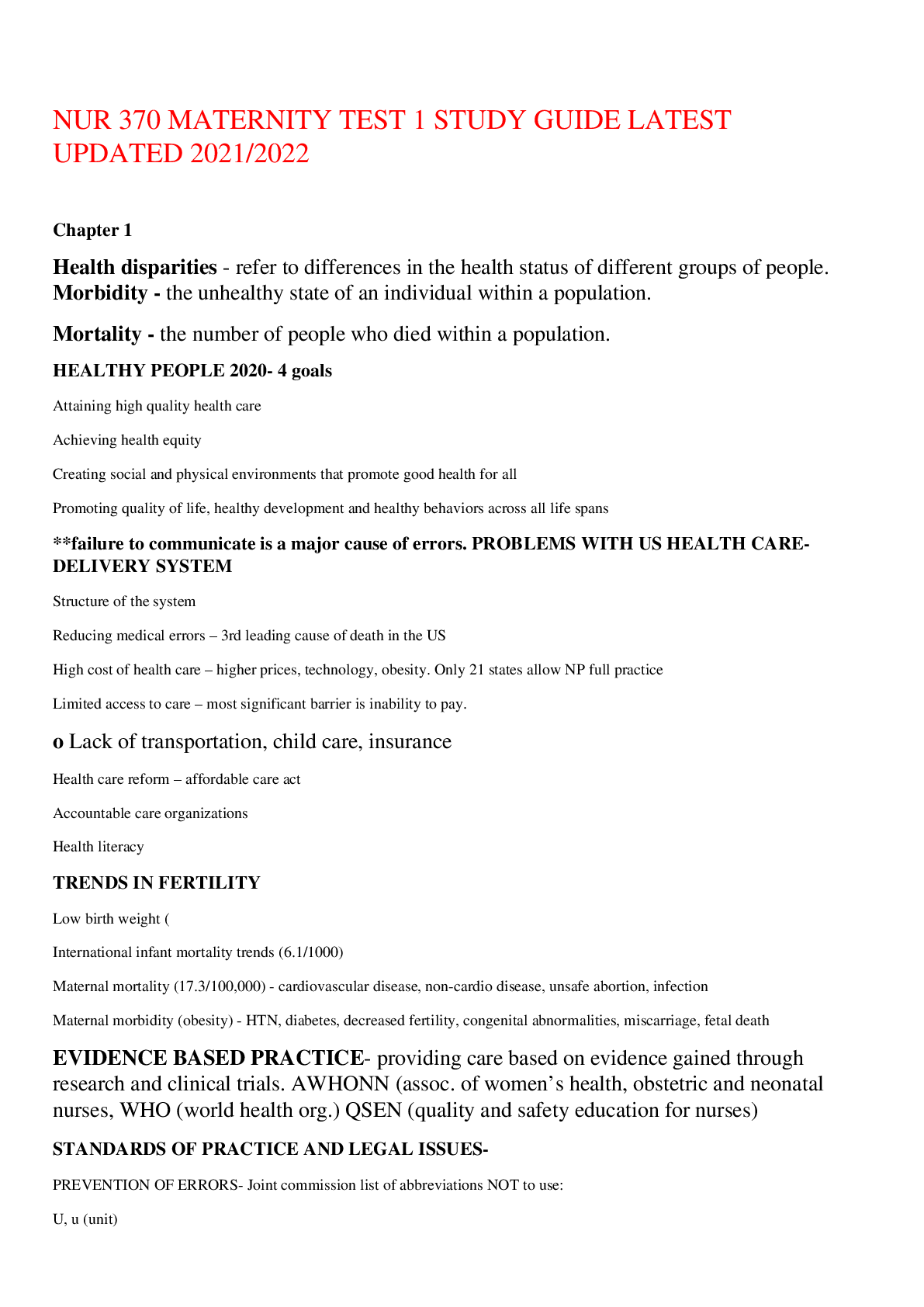
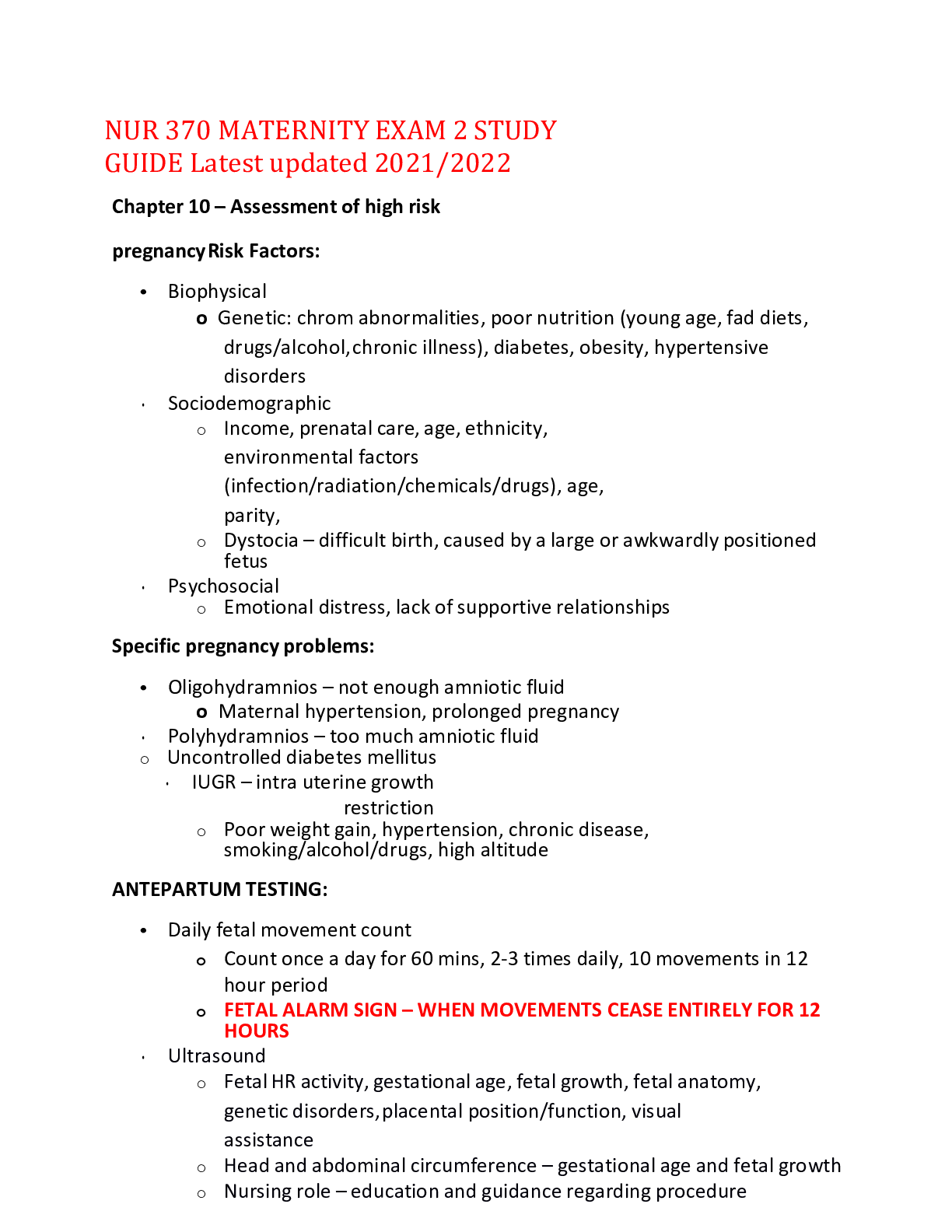
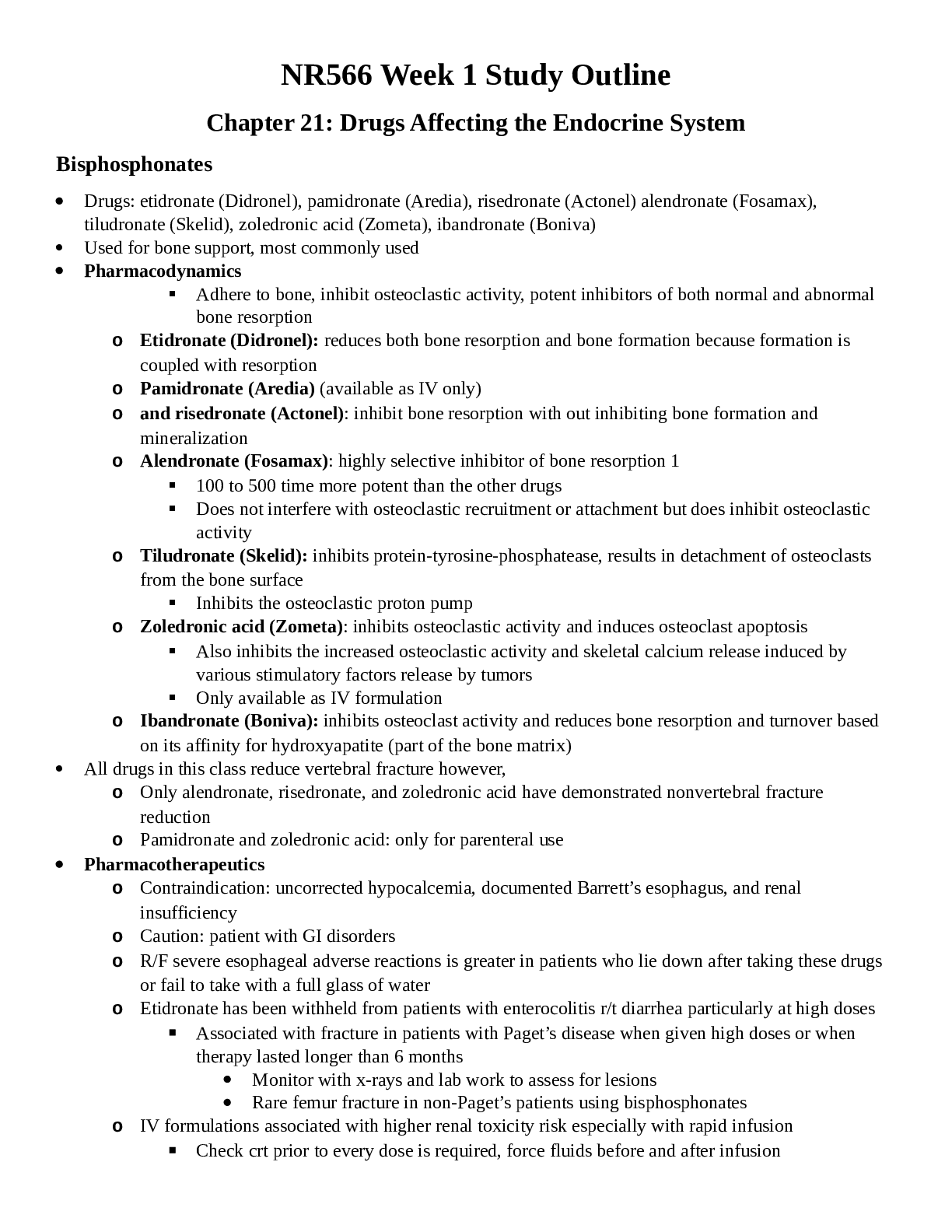
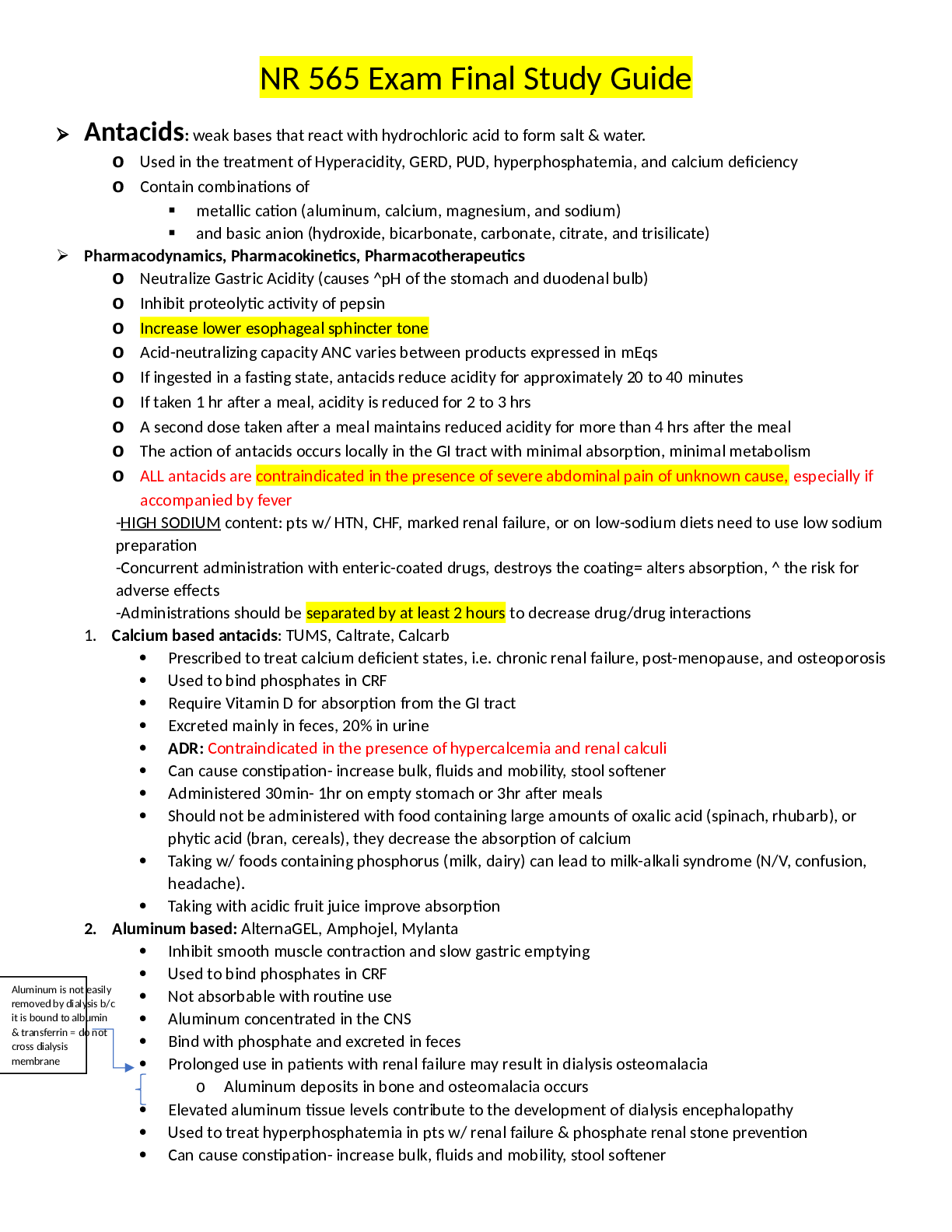




.png)
